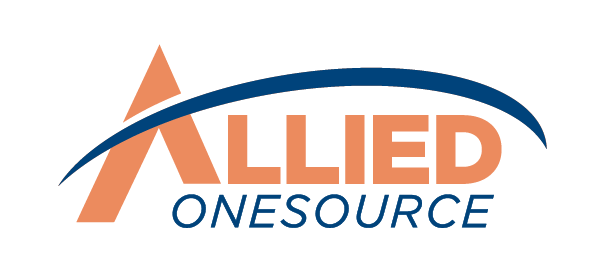2026 Hiring Outlook for Distribution & Contact Centers
Your hiring plans for 2026 need to account for more than seasonal demand spikes or routine turnover. Contact center and distribution operations are reshaping faster than most leaders anticipated, driven by AI integration, shifting workforce expectations, and new operational models that blur traditional job boundaries.
According to the Bureau of Labor Statistics, transportation and warehousing employs 6.6 million workers, representing 5 percent of all private-sector jobs.¹
Whether you're managing a contact center facing the transition to AI-assisted agents or overseeing distribution networks where automation is becoming standard, your workforce planning must evolve beyond traditional approaches. Start preparing now for the talent requirements and operational changes that will define frontline hiring in 2026.
1. AI-Enhanced Operations Hiring Trend
The roles your teams perform today will look different in 2026 as AI moves from experimental tool to operational partner. According to Gartner, customer service functions that implement the "connected rep" strategy will improve contact center efficiency by 30 percent by 2026.²
What Contact Centers Need Now
Contact center agents are becoming AI-assisted representatives who work alongside intelligent systems rather than replacing them entirely. The connected rep model means agents receive real-time guidance, automated call summaries, and predictive customer insights during live interactions.
You'll need to hire for communication skills and emotional intelligence while training current staff to collaborate with AI copilots that handle routine tasks and surface relevant information instantly.
What Distribution Centers Need Now
Warehouse and distribution workers are shifting from manual labor to automation oversight roles. Your hiring priorities should focus on candidates who can troubleshoot robotic systems, interpret data dashboards, and adapt quickly to new technologies.
Cross-training becomes essential as workers move between traditional fulfillment tasks and technology management responsibilities throughout their shifts.
Action Tip
Map the skills your current workforce will need for AI collaboration by conducting role-by-role assessments of which tasks will be automated versus enhanced. Start with pilot training programs that teach technology partnership rather than replacement, focusing on how workers can leverage AI tools to improve their performance.
Adjust job descriptions to reflect these hybrid responsibilities and include specific AI collaboration skills in your candidate evaluation criteria.
2. Remote-First Hiring Trend
Your talent acquisition strategy must account for permanent changes in where and how frontline work gets done.
Expand Your Talent Pool
Contact center operations have proven that remote work maintains service quality while expanding your candidate pool beyond local markets. Plan recruitment strategies that leverage geographic flexibility to access skilled representatives in lower-cost regions while maintaining consistent training and performance standards across distributed teams.
Prepare for Nearshore Operations
Distribution networks are shifting closer to home, with Mexico becoming a major hub for cross-border logistics. You'll need bilingual coordinators, customs specialists, and logistics managers familiar with cross-border operations as supply chains reorganize around nearshoring strategies.
Next Steps
Evaluate your infrastructure for remote team management, including communication platforms, performance monitoring systems, and training delivery methods that work across time zones. Research labor markets in target regions to understand wage expectations, skill availability, and regulatory requirements.
Consider how nearshoring trends affect your current facility locations and whether you need to adjust staffing requirements or add bilingual capabilities to your recruitment strategy.
3. Skills-First Hiring Revolution
Your job requirements need to prioritize what candidates can do over where they studied. According to the Bureau of Labor Statistics, customer service representatives face a 5 percent employment decline through 2034, yet 341,700 annual openings are projected from turnover alone.³
New Contact Center Requirements
Focus hiring on communication skills, problem-solving ability, and emotional intelligence rather than college degrees. For instance, in your contact center, a candidate who demonstrates empathy and clear verbal skills during role-playing scenarios may outperform someone with a business degree but limited customer interaction experience.
Look for representatives who can build rapport quickly and de-escalate tense situations effectively.
New Distribution Center Priorities
Prioritize technical aptitude and adaptability over traditional warehouse experience. In your distribution operations, candidates who can learn new systems quickly and troubleshoot equipment issues become more valuable than those with years of manual picking experience but limited technology comfort. Test for spatial reasoning and mechanical problem-solving during your hiring process.
How to Start
Redesign assessments to measure skills directly through simulations, role-playing scenarios, and practical tests rather than reviewing credentials and resumes. Create scoring rubrics that weight demonstrated abilities over educational background, and train hiring managers to recognize transferable skills from non-traditional backgrounds.
Pilot skills-based hiring with a few positions first to test your new evaluation methods before rolling them out company-wide.
4. Technology-Driven Retention Strategies
Technology investments that make jobs easier and more engaging become your primary retention tools as labor markets tighten.
Create Tech Career Paths
In your organization, AI training programs can transform entry-level agents into specialized technical support representatives or warehouse associates into automation technicians. Cross-functional exposure through technology platforms shows employees clear advancement opportunities while building the hybrid skills your operation needs.
Reduce Daily Frustrations
Automation handles repetitive tasks like data entry and routine status updates, letting your team focus on problem-solving and customer relationship building.
How to Begin
Prioritize technology investments that eliminate the most frustrating aspects of daily work, such as repetitive data entry, manual status updates, or time-consuming administrative tasks. Develop clear technology training pathways that show employees how mastering new tools leads to advancement opportunities and higher-value responsibilities.
Budget for both the technology itself and the ongoing training support needed to ensure adoption success across your workforce.
2026 Readiness Checklist
Use these questions to assess your hiring readiness:
- Can your contact center team scale remotely within 48 hours if needed?
- Do job descriptions focus on skills and competencies rather than degree requirements?
- Are your training programs designed for AI collaboration and technology partnership?
- Can you recruit effectively across multiple geographic regions and time zones?
- Do you have clear career progression paths that incorporate emerging technology skills?
- Are your retention strategies built around technology that reduces employee frustration?
- Can your distribution teams adapt to new automation systems without extensive retraining periods?
Ready to Build Your 2026 Workforce Strategy?
The hiring landscape for contact centers and distribution operations will look different in 2026, but the companies that start planning now will have the advantage. At Allied OneSource, we help operations leaders navigate these workforce transitions, from identifying the right skills for AI-enhanced roles to building recruitment strategies that work across remote and nearshore markets.
Whether you need to scale quickly for seasonal demand or build long-term capability for technology integration, we connect you with candidates who can adapt and grow with your operation. Contact us today to discuss how we can support your 2026 hiring strategy.
References
- Allard, M. D., & Keller, K. (2024, July). Keeping America moving: Employment in transportation and warehousing industries. Bureau of Labor Statistics. https://www.bls.gov/spotlight/2024/keeping-america-moving-employment-in-transportation-and-warehousing-industries/home.htm
- Gartner says customer service functions that implement a 'connected rep' strategy will improve contact center efficiency by 30% by 2026. (2023, February 14). Gartner. https://www.gartner.com/en/newsroom/press-releases/2023-02-14-gartner-says-customer-service-functions-that-implement-a-connected-rep-strategy-will-improve-contact-center-efficiency-by-30-percent-by-2026
- Customer service representatives. (n.d.). Bureau of Labor Statistics, U.S. Department of Labor. https://www.bls.gov/ooh/office-and-administrative-support/customer-service-representatives.htm











